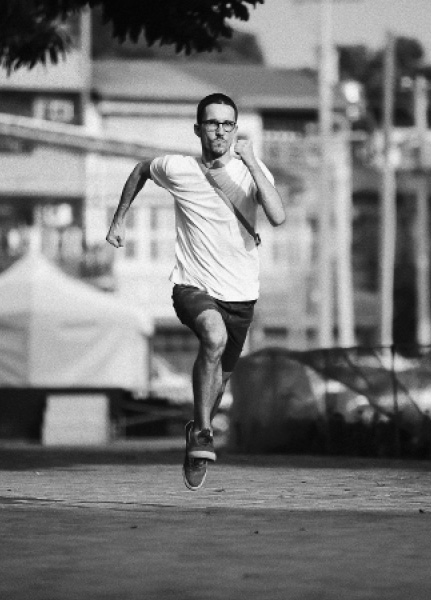
THE MURDER SERIES. PART 6
first performed on November 9, 2017
321 Art Village, Tainan City, Taiwan
performed once in 2017
FELIX ROADKILL
Berlin, Germany
034219146f034219146e034219146l034219146i034219146x034219146r034219146o034219146a034219146d034219146k034219146i034219146l034219146l034219146@034219146g034219146m034219146a034219146i034219146l034219146.034219146c034219146o034219146m
issuu.com/felixroadkill
THE MURDER SERIES. PART 6
FELIX ROADKILL
In the photo representing this performance, you see me running, captured in mid-air by the photographer. I am not touching the ground, leaping forward as quickly as I can until I hit a group of people gathering 20 meters in front of me. It is a bittersweet representation of a performance in which I address the brutal executions of homosexual men in Iraq and Syria by fighters of the Islamic State. Victims have been pushed off buildings to their death as the town’s citizens watch the spectacle from below. The images of these cruel murders have circulated on the internet in the past five years. An intimidating tool to spread terror, homophobia and intimidation worldwide—depicting blindfolded men in mid-air, not touching the ground, seconds before hitting the hard ground and their inevitable death.
In my performances of “The Murder Series,” which have been exhibited at festivals in Canada, Germany, and Taiwan, I reproduced the photos and videos of these executions with simple actions, like running quickly, breaking coal with my head, cutting and blindfolding myself, etc. It is my attempt to transform cases of brutality and contempt into artistic imagery in order to challenge collective ignorance and political indifference.
For Part 6 of the series, I chose my actions to represent both the victims and the perpetrators. The setting made a clear distinction between the spectators and the “protagonists.” The audience could watch my actions only from a distance. They were kept behind a wall and gate, away from a high structure, which I climbed. I ran towards the audience as quickly as I could, stopping aburptly only centimetres away from them. I tied a rope to the structure, spanning the distance from the structure’s top to the audience. Other smaller actions like falling over, singing, and talking to my audience about the two sides of a vinyl record formed a narrative structure. I then repeated everything, but blindfolded. This simple restraint did not only visibly affect my demeanor, but especially transformed my feeling of security about what to do and whom I could trust. The audience immediately started assisting me with where to run and how to climb—ultimately shifting the power relation of the performance significantly. It ended by opening the gate for the audience to re-enter the space.